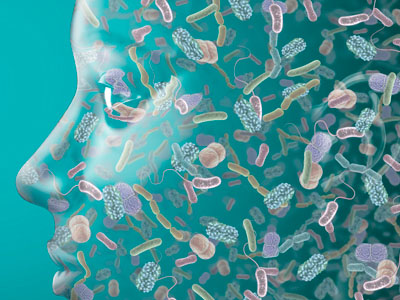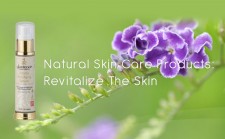 Your skin is an ecosystem. Like any ecosystem, it depends on a balance of components for maintaining good health. Emerging research is beginning to show that key components of this ecosystem include microbes – bacteria, fungi, and even mites.
Your skin is an ecosystem. Like any ecosystem, it depends on a balance of components for maintaining good health. Emerging research is beginning to show that key components of this ecosystem include microbes – bacteria, fungi, and even mites.
Having microbes cover your skin may sound yucky at first. In general, though, these tiny organisms get an unnecessarily bad rap. Only a few are truly bad.
By way of comparison, we have known for more than a century about the crucial importance of microbes in our digestive system. This is our internal microbiome – i.e., the set of microbes that live inside our bodies.
Over the past several decades scientists have discovered some fantastic facts about our internal microbiome. More than 400 different kinds of bacteria inhabit our digestive system when it is healthy. Estimates are that our own cells are outnumbered 10 to 1 by the bacterial cells inside us.
Knowledge about the friendly bacteria in our digestive system has spawned a huge industry around supplements and foods that provide so-called probiotics. Cultured foods such as yogurt lead the way.
Books have already been written about the importance of probiotics and where to get the right ones for optimal health. Most recently, however, scientists have stumbled upon an entirely different kind of microbiome – i.e., one on the outside of our bodies. It has been named, appropriately enough, the skin microbiome.
Science of the Skin Microbiome
Skin microbes are nothing new. Science has long known about the microbial basis of acne, ringworm, warts, and numerous other infections. Until recently, however, nobody knew much about the potential for skin microbes to be of benefit.
Studies of the skin microbiome are still so new that most of the information about it entails what microbes can be found on skin and not much about what they are doing there. The extent of their diversity and occurrence, however, is the foundation for a hot new field of study.
Current surveys reveal that there are around 1,000 species of bacteria found on human skin. Most of the trillion bacterial cells on each of us are found in the outer layer of skin and in the hair follicles. They are generally believed to be beneficial or at least not harmful.
At this time we know that many external species of bacteria work with the immune system to prevent or control infection. These species have a symbiotic relationship with one another that helps maintain the defensive role of the skin against microbes that can be harmful.
Taking Care of Friendly Skin Microbes
Even though science still has a lot to learn about the skin microbiome, one thing is perfectly clear: Destroying skin microbes with the use of harsh cosmetics, cleansers, and synthetic chemicals is harmful to us. Indeed, doing so is harmful not only to skin but also to the immune system that depends on good skin health.
One of the biggest abuses of our skin microbiome comes from the use of antibacterial soaps or body washes. Killing skin bacteria with these products is like taking antibiotics – the good guys get snuffed out along with the bad guys. In the long run such usage selects for stronger bad guys that eventually won’t even be harmed by those same antibacterial soaps any more.
The key for taking care of the skin microbiome is the same as for achieving good skin health in the first place. This means only using all-natural skin care products that are made up of ingredients that have a long history of promoting healthy skin. Labels on such products should consist of ingredients like ginseng, Astragalus, licorice root, and burdock root, not unpronounceable synthetic chemicals.
Indeed, taking good care of your skin, including the friendly bacteria that cover it, depends on cleansers, exfoliaters, toners, soaks, and many other products that you will find in the Natural Skin Care Regimen from Jadience Herbal Formulas.
Go ahead. Be nice to your skin microbes. They are there to keep you healthy.


